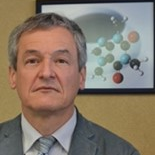Topic Menu
► Topic MenuTopic Editors


Nanomaterials and Catalysts for Clean Fuels and Sustainable Energy
Topic Information
Dear Colleagues,
As the most important fossil fuel, petroleum is supplied worldwide to satisfy the major demands of industries, transportation, and civil activities. As low-sulfur sweet crude oil reservoirs have been depleted, petroleum that contains more and heavier sulfur compounds has become the main refinery feedstock. These crude oils usually contain a spectrum of organosulfur compounds which must be removed before feeding catalytic cracking refining facilities in order to avoid the excessive release of air pollutants and the rapid deactivation of the catalyst. As increasingly strict environmental regulations are taking effect worldwide, sulfur content in oil products such as diesel and gasoline has been limited to lower than 10 ppm, and thus, ultralow-sulfur fuels produced using deep desulfurization techniques are in high demand.
On the other hand, scientists and researchers from the academic and industrial sectors are investigating other renewable and clean energy sources such as biofuels, hydrogen, and solar energy. In the traditional and new fuel production processes, catalysis always plays a central role in the improvement of the reactant conversion for product selectivity and energy efficiency.
This Topic entitled “Nanomaterials and Catalysts for Clean Fuels and Sustainable Energy” highlights the state of the art of nanomaterials and nanocatalysts and their applications in the production of clean fuels and sustainable energy. New findings in fundamental research, including novel synthesis routes, advanced characterization, together with applications for petroleum refining processes, ultralow-sulfur fuel production, biofuel production, hydrogen production, and solar energy conversion and storage are of prime importance to this Topic.
This Topic covers but is not limited to the following topics:
1. Catalysts for Ultralow-Sulfur Fuel Production- Oxidative desulfurization;
- Hydrodesulfuration;
- Hydroisomerization and alkylation;
- Catalysts for Fischer–Tropsch synthesis;
- CO2 mitigation and photoconversion to alcohols.
- Acidic catalysts for biofuel production;
- Base catalysts for biofuel production;
- Biocatalysts for biofuel production;
- Photocatalysis for water splitting;
- Electrocatalysis for H2 production;
- The catalytic decomposition of natural gases for hydrogen and carbon nanotube production;
- Catalysis for alcohol reforming processes (methanol, ethanol and glycerol…).
- The synthesis and applications of core–shell photocatalysts;
- Solar energy conversion, storage, and applications.
Research papers and review or mini review papers related these topics will be particularly welcome. We are also planning to publish some selected articles contributing to this Topic in a book.
Prof. Dr. Jin An Wang
Prof. Dr. Lifang Chen
Prof. Dr. Luis Enrique Noreña
Topic Editors
Keywords
- nanomaterials, nanocatalysts
- ultralow-sulfur fuels, petroleum refining, oxidative desulfurization
- hydrodesulfurination
- hydroisomerization
- hydrogen production
- hydrocarbon catalytic decomposition
- alcohol reforming
- biofuel production
- enzyme immobilization
Participating Journals
| Journal Name | Impact Factor | CiteScore | Launched Year | First Decision (median) | APC |
|---|---|---|---|---|---|

Applied Sciences
|
2.5 | 5.5 | 2011 | 19.8 Days | CHF 2400 |

Catalysts
|
4.0 | 7.6 | 2011 | 16.6 Days | CHF 2200 |

Clean Technologies
|
4.7 | 8.3 | 2019 | 33.7 Days | CHF 1600 |

Energies
|
3.2 | 7.3 | 2008 | 16.2 Days | CHF 2600 |

Nanomaterials
|
4.3 | 9.2 | 2010 | 15.4 Days | CHF 2400 |

Preprints.org is a multidisciplinary platform offering a preprint service designed to facilitate the early sharing of your research. It supports and empowers your research journey from the very beginning.
MDPI Topics is collaborating with Preprints.org and has established a direct connection between MDPI journals and the platform. Authors are encouraged to take advantage of this opportunity by posting their preprints at Preprints.org prior to publication:
- Share your research immediately: disseminate your ideas prior to publication and establish priority for your work.
- Safeguard your intellectual contribution: Protect your ideas with a time-stamped preprint that serves as proof of your research timeline.
- Boost visibility and impact: Increase the reach and influence of your research by making it accessible to a global audience.
- Gain early feedback: Receive valuable input and insights from peers before submitting to a journal.
- Ensure broad indexing: Web of Science (Preprint Citation Index), Google Scholar, Crossref, SHARE, PrePubMed, Scilit and Europe PMC.


